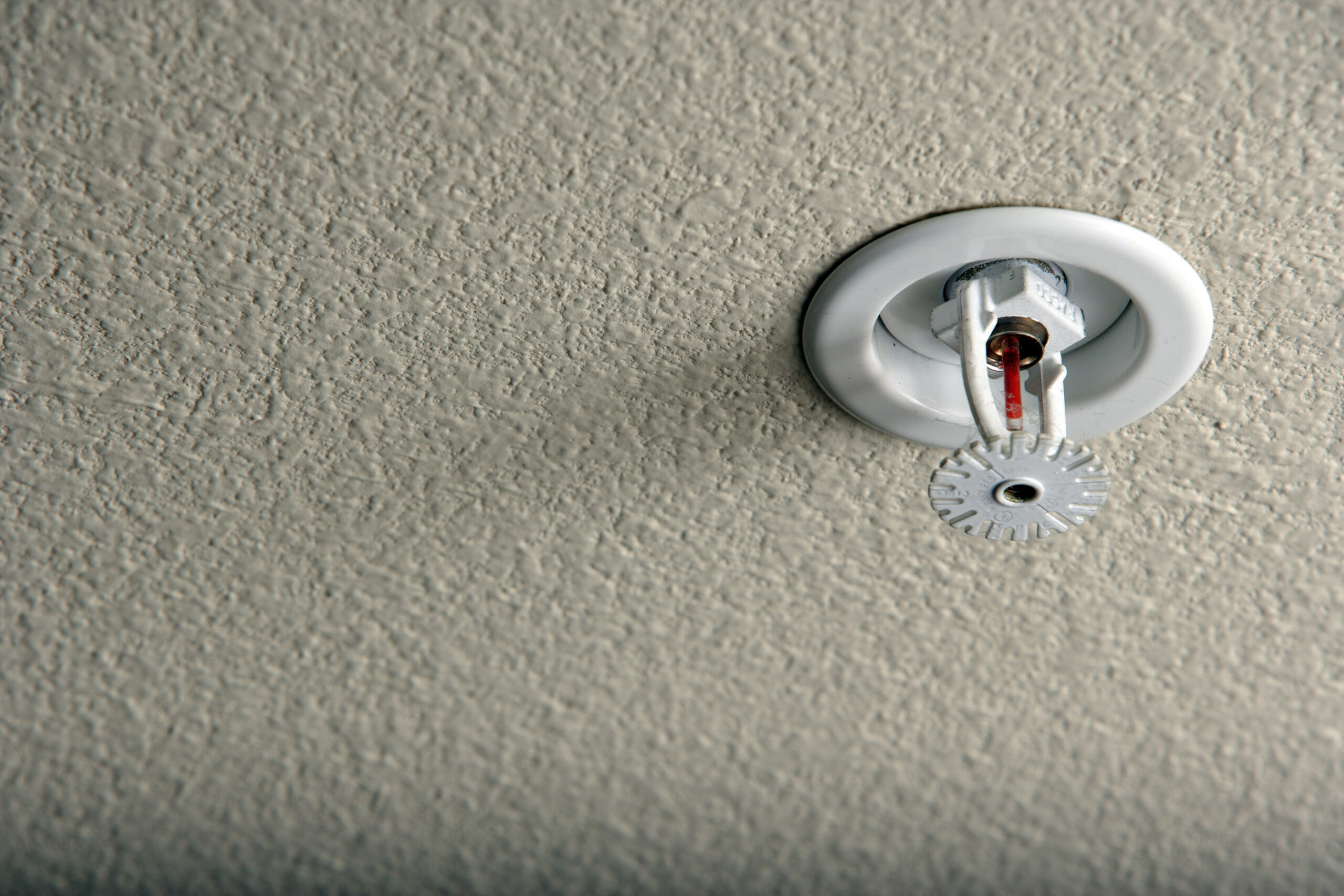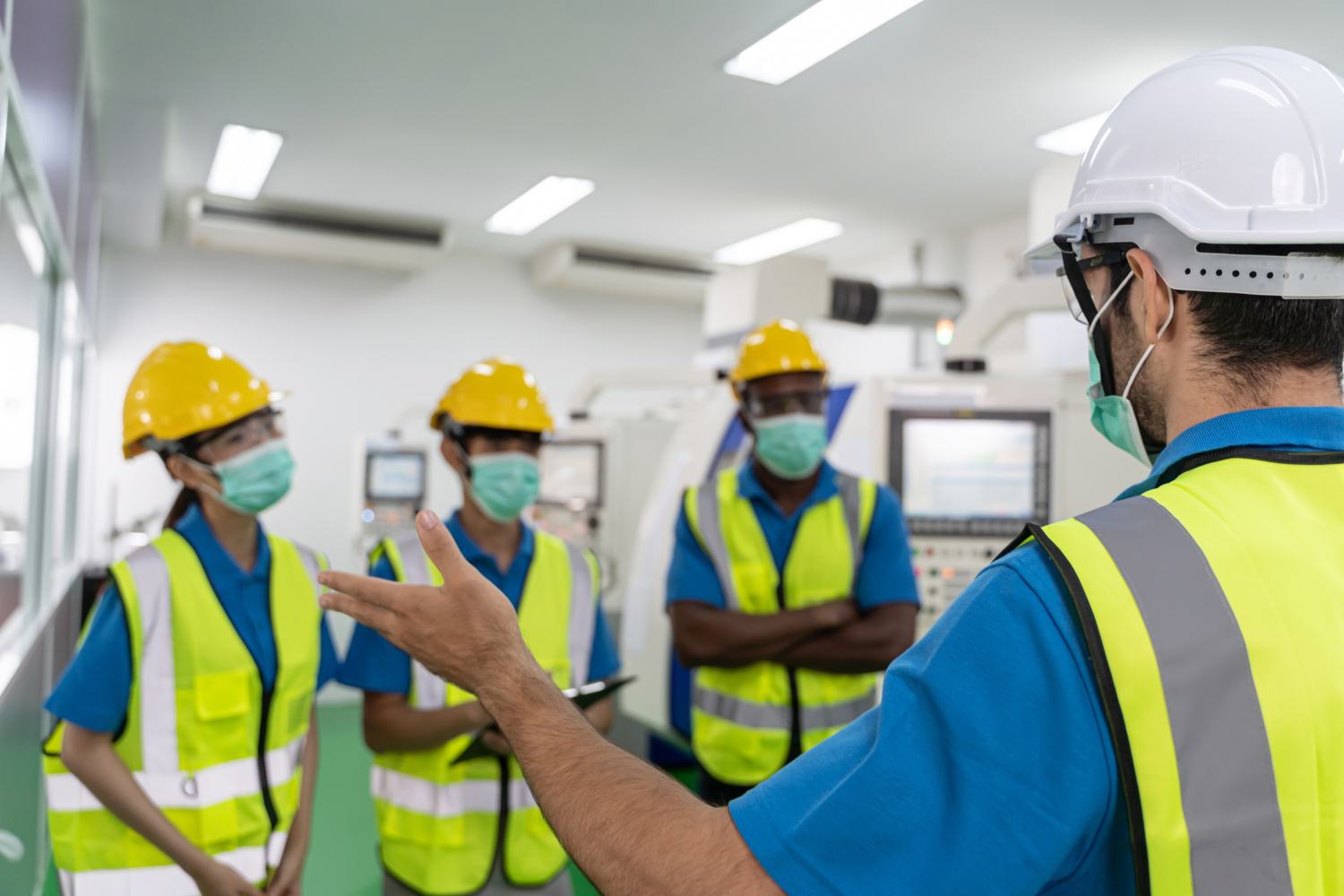A fire sprinkler is an effective fire safety tool. However, it can be unintentionally discharged when it is accidentally set off by friendly fire or a fire sprinkler head is struck or sheared off by a person or equipment.
Accidental fire sprinkler activation can be very disruptive to your business and cost a lot of time and money as a deluge of water floods your building. You can call 911, but from there you’ll wait: and a typical fire sprinkler head for a commercial system (not including high-risk or special hazard systems which are much higher) will discharge between 20-40 gallons of water each minute that you wait for emergency responders, which could easily be 10-15 minutes. Even if help arrives in five minutes, at least 100-200 gallons of water fills your building, resulting in significant water damage and expense.
Most business owners never think about the fire sprinkler system, or the consequences from accidental fire sprinkler activation, until they are left to pay for damages.
So how can you prevent these accidents and save your business from significant costs, claims and damages?
3 Practical Risk and Safety Management Steps to Prevent and Prepare for Accidental Fire Sprinkler Activation
Educate
Teach your employees the fire sprinkler basics. Typically, if one sprinkler head goes off, they don’t all go off (not including high-risk or special hazard fire sprinkler systems). Depending on the type of your hazardous work environment, each sprinkler comes with a heat-sensitive element with a different preset temperature that determines when it responds to heat from fire. Only those sprinkler heads in the immediate vicinity of the fire activate and discharge water.
Fire sprinkler heads, if tampered with, struck by tools or equipment, or damaged, can also go off without warning. Make sure your employees know never to hang seasonal decorations from sprinkler heads, which is a very common cause of accidental fire sprinkler activation discharge.
Protect
Only use approved cages or guards, made of tough metal that surrounds fire sprinkler heads, to protect them from being damaged if lightly struck. Also, mark areas around sprinklers that could be exposed to accidental impact.
Consider investing in a few prevention tools (quick-stop talon, fire sprinkler stop valve or sprinkler wedge). These can help reduce your property damage by temporarily stopping the water flow until the fire department arrives and repairs your fire sprinkler system.
Prepare
Plan for unintentional sprinkler discharge. Even if you educate employees and protect your fire sprinkler heads, your system can still go off—as shown in the video. To mitigate damage in your building, you’ll need to shut down your system quickly, which requires knowing where your control valves are and marking them accordingly. If you are located in a multi-tenant building, you may not have access to each control valve, which would delay you in shutting down fire sprinkler system—causing unnecessary additional damage. Discuss possible action plans with your landlord to mitigate this problem.
Stay tuned for our next blog in this series, which will discuss how to develop and conduct a sprinkler impairment plan when you shut down your fire sprinklers for regular maintenance or for repair, and how to notify your insurance company to avoid potential coverage issues.
FAQ
1. How often should I have my fire sprinkler system inspected to prevent accidental activations?
Regular inspections vary based on local regulations and industry guidelines, but most professionals recommend at least an annual inspection by a qualified technician. Some jurisdictions may require quarterly or semi-annual checks to ensure system integrity, identify potential sources of damage, and confirm that sprinkler heads are not obstructed or at risk from accidental contact.
2. What should I do if a sprinkler head is accidentally damaged before it activates?
If you notice a damaged sprinkler head or suspect that it could lead to unintended discharge, immediately contact a certified fire sprinkler contractor or your building’s maintenance team. They can evaluate the situation and replace or repair the damaged head before it causes water damage. Do not attempt to fix or handle the sprinkler head yourself, as this may trigger an unexpected discharge.
3. Are there additional measures to protect high-risk areas more prone to accidental sprinkler activation?
Yes. In work environments where equipment movement or elevated activity is common (e.g., warehouses with forklifts), consider installing additional protective cages, using signage to remind employees about clearance, and training staff to carefully navigate around sprinkler heads. Also, discuss specialized sprinkler head designs with your provider—some heads are designed to be more impact-resistant or respond differently to reduce accidental discharges in high-traffic zones.
4. How can I ensure that authorized personnel know how to quickly shut down the system in an emergency?
Create a written emergency response plan and conduct regular training sessions. During these sessions, show employees where control valves are located and how to operate them safely. If certain valves are only accessible by the landlord or building management (in a multi-tenant situation), coordinate protocols with them in advance. Documentation and clear signage at valve locations are critical to ensuring a timely, coordinated response.
Contact PSA
In the meantime, if you have more questions about fire sprinkler systems and how to manage your related risks, please feel free to contact PSA or email me at spomponi@psafinancial.com. For more safety tips, also check out our Risk & Safety Management Resources.




